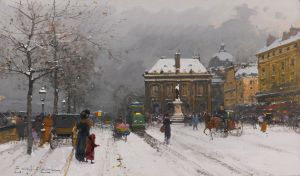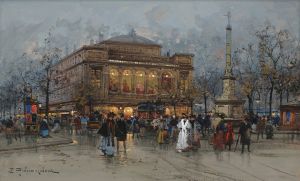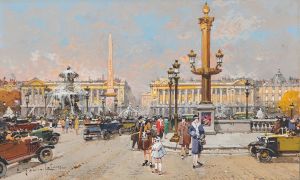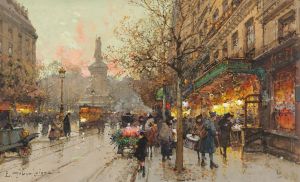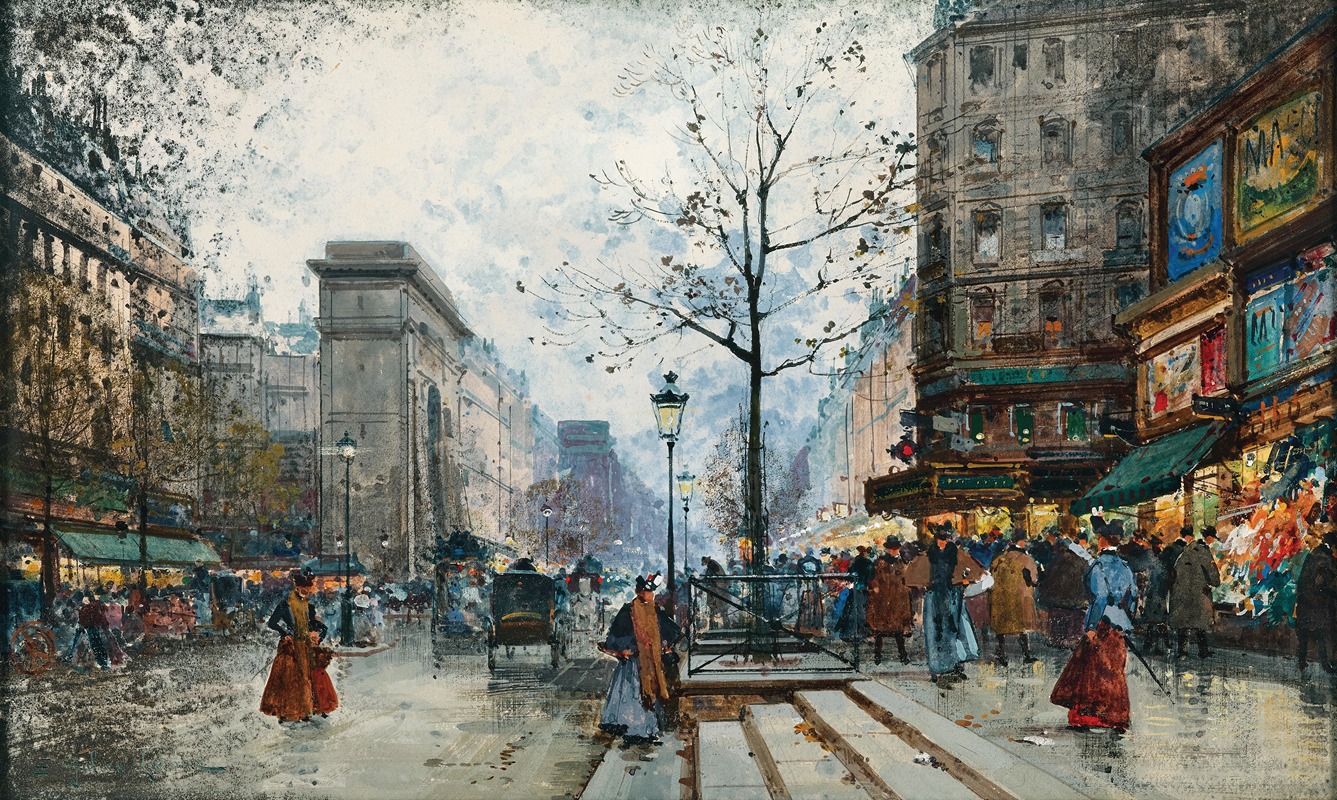
Paris, La Porte Saint-Denis
A hand-painted replica of Eugène Galien-Laloue’s masterpiece Paris, La Porte Saint-Denis, meticulously crafted by professional artists to capture the true essence of the original. Each piece is created with museum-quality canvas and rare mineral pigments, carefully painted by experienced artists with delicate brushstrokes and rich, layered colors to perfectly recreate the texture of the original artwork. Unlike machine-printed reproductions, this hand-painted version brings the painting to life, infused with the artist’s emotions and skill in every stroke. Whether for personal collection or home decoration, it instantly elevates the artistic atmosphere of any space.
Eugène Galien-Laloue was a French painter known for his depictions of Parisian street scenes, particularly those capturing the essence of the city during the late 19th and early 20th centuries. His work, "Paris, La Porte Saint-Denis," is a quintessential example of his artistic style and thematic focus. Galien-Laloue was born in 1854 in Montmartre, Paris, and he became renowned for his ability to portray the bustling life of Paris with a sense of warmth and nostalgia.
"La Porte Saint-Denis" is an iconic triumphal arch located in the 10th arrondissement of Paris. It was commissioned by King Louis XIV in 1672 to commemorate his military victories in the Rhine and Franche-Comté regions. Designed by architect François Blondel and sculptor Michel Anguier, the arch stands as a testament to the grandeur of the French Baroque architectural style. The structure is adorned with bas-reliefs and sculptures that celebrate the king's achievements and the glory of France.
Galien-Laloue's painting captures the vibrancy of the area surrounding La Porte Saint-Denis. His works are characterized by their detailed representation of urban life, often featuring bustling streets, horse-drawn carriages, and pedestrians going about their daily activities. The artist had a unique ability to convey the atmosphere of Paris, with its changing seasons and the interplay of light and shadow on the city's architecture.
In "Paris, La Porte Saint-Denis," Galien-Laloue employs a palette of soft, muted colors, which is typical of his style. This choice of color helps to evoke a sense of nostalgia and romanticism, drawing the viewer into the scene. The painting likely depicts a typical day in Paris, with people engaging in various activities, highlighting the dynamic and lively nature of the city.
Galien-Laloue's technique involved the use of gouache, a type of opaque watercolor, which allowed him to achieve a high level of detail and precision in his work. This medium was particularly suited to his style, enabling him to capture the intricate architectural elements of Parisian buildings and the subtle nuances of light and atmosphere.
The artist's work is often associated with the Belle Époque period, a time of cultural flourishing in France that spanned from the late 19th century until the outbreak of World War I. During this era, Paris was a hub of artistic innovation and social change, and Galien-Laloue's paintings reflect the spirit of the time. His depictions of Parisian life offer a glimpse into the everyday experiences of the city's inhabitants, providing a historical record of the urban landscape during this vibrant period.
Galien-Laloue's paintings, including "Paris, La Porte Saint-Denis," remain popular among collectors and art enthusiasts for their historical significance and artistic merit. His ability to capture the essence of Paris has made his work a valuable resource for understanding the city's cultural and architectural heritage. Today, his paintings are held in private collections and museums, where they continue to be appreciated for their beauty and historical value.
In summary, Eugène Galien-Laloue's "Paris, La Porte Saint-Denis" is a notable example of his work, showcasing his skill in depicting the lively streets of Paris. Through his use of color, light, and detail, Galien-Laloue transports viewers to a bygone era, offering a window into the daily life and architectural splendor of the city during the Belle Époque.





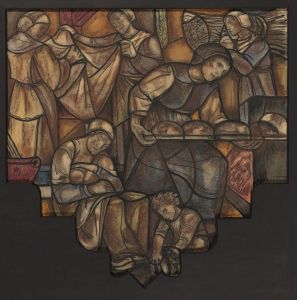

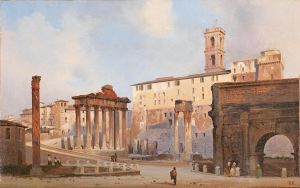
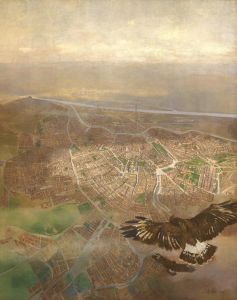
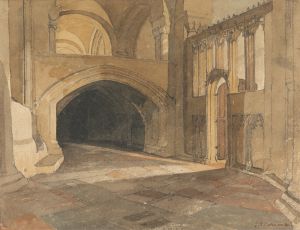
![Design for Longchamps Restaurant, 79th St., New York, NY.] [Proposed treatment for front of restaurant](/imgs/249289/s/winold-reiss-design-for-longchamps-restaurant-79th-st-new-york-ny-proposed-treatment-for-front-of-restaurant-83a4c86c.jpg)


